|
Photography by Franck Alix
News from the Lowlands! One of the underrated power trio's in all of punk rock, The Anomalys are back, and this time, it took only TWO years for them to come through with a new album. Record time, and hey, there is no pressure, right? Down The Hole is set for release in September on their longtime mothership, Slovenly Recordings, and the power trio chose the song “Despair” as the second single to debut. Opting to exhibit the range of tempos Down The Hole carries, “Despair” is a frantic-paced spazz out compared to the mellow n’ rolling riffs of the record’s first single, “Anxiety.”
One thing for sure: Down The Hole is a much darker album than their last record (review here) and should stoke anyone who felt seeing Jay Reatard live was truly a life-changing experience. There’s no filler in this one. This record is straight from the gut into your face and switches from slow and steady to fast as f*uck.
Down The Hole is available September 6th on vinyl and digitally through Slovenly Recordings. Catch them in Benidorm as part of this year’s Funtastic Dracula Carnival, which is happening in late October. Nissan Motorsports (NISMO) kicked off the 2024 Pirelli GT4 America championship season at Sonoma Raceway with great expectations, and was rewarded with strong performances including a pair of podium finishes. The two-car TechSport Racing team has returned for 2024, joined by single car Nissan Z NISMO GT4 entries from Blackdog Racing and Flying Lizard Motorsports, giving Nissan three teams with championship pedigrees. Problems with the track surface meant the Friday practice sessions were cancelled as track repairs were made, compressing a three-day schedule into two, and eliminating valuable track time for the two new Nissan teams. The Saturday morning practice session set the grid positions for both the Saturday afternoon and Sunday morning races. Mike Carcamo, Program Director, Sports, NISMO, Infiniti, and Motorsports, Nissan Motor Corporation recapped the weekend, “It was a very important debut for the evolution kit for the Nissan Z NISMO GT4. The start of the weekend was rough as track conditions limited our running time, but the teams made the best of it. We could tell that the pace of the car was there considering the depth of the GT4 field. We couldn’t have had a better start than race #1 with the front row sweep and podium finishes in both the Silver and Pro-Am classes. Race #2 was more difficult. We were in the hunt for the lead until we detected some smoke and we pulled the car for a potential issue in the engine. Clearly, we showed that the car has pace and we’ll be focusing on reliability. We also appreciate the effort from newest Nissan teams from Flying Lizard and Blackdog Racing, who suffered from the cancelled Friday sessions to learn their new race car.” Eric Powell who started from the pole in race #1 and scored the fastest race lap in race #2 noted that, “It was an interesting weekend with very little practice time. Our knowledge from developing this platform last year definitely helped us. The car is very different from the 2023 development car. It’s a step up in every way and I think we showed that this weekend. We didn’t exactly get the results we hoped but we proved the car is very fast and can fight for wins. Our time is coming very soon! The car truly felt amazing today. I was loving it.” Race #1 Highlights:
TechSport Racing made it an all-Nissan front row with Eric Powell and Jonathan Nuedorf leading the 30-car field across the starting line. Powell set the pace early on, stretching out a 3.5 second lead before the driver change pit stops began. Meanwhile Jonathan ran strong before handing off the Michai Stephens. A few minutes later Powell handed off to Colin Harrison. At the end of the race, the team were each rewarded with a podium finish, Neudorf/Stephens placing third in the Silver class with Powell/Harrison third in the Pro-Am class. Race #2 Highlights: Two Z’s started from the top ten on Sunday morning, with Michai Stephens starting second in the #23 TechSport Nissan Z NISMO GT4 and Michael Cooper sixth overall in the #9 Blackdog Nissan Z NISMO GT4. Stephens ran with the front pack before handing off to Jonathan Neudorf. Neudorf was challenging for the lead with just ten minutes left when the car started to smoke and the team retired the car. Colin Harrison turned the #22 TechSport Nissan Z NISMO GT4 over Eric Powell who set the fastest race lap on the way to a fifth -place finish in the Pro-Am class. The Pirelli GT4 America championship is for customer teams racing with homologated race cars. There are no factory teams. All Pirelli GT4 America races are broadcast live, and archived on the SRO Motorsports GTWorld YouTube channel. Dean Case Nissan Motorsports PR 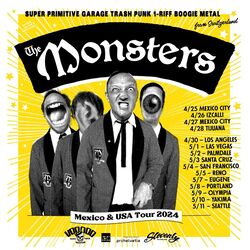 The Monsters are coming; what have we done to deserve this? The fact that one of Switzerland's best-kept secrets is finally coming Westward is a 2024 highlight for the rock n' roll maniacs in the towns they're roaming through. These guys are the real deal, lifers in the drudges of the punk n' trash rock world with no intention of stopping or slowing down the destruction of eardrums wherever they plug into. Forty years to tour over here isn't too late; we're just grateful and stoked that these Swissmen have had the opportunity to do so. The Monsters are like Slayer; they kept their sound the same throughout their career. Chainsaw through bone garage trash! It works, it's authentic, and they stuck with it through all the trends and crap pumped via the mainstream culture machine. After all, they can't stand copycat bands and hate them today as much as yesterday. Take advantage of this chance! The Monsters Mexico & US West Coast Tour Spring 2024
Get all the information you need about The Monsters via their website and stream their new album You're Class, I'm Trash via Bandcamp. Photography by Patrick Principe You’re damn right a band consisting of Roger Corman-esque furry nether regions will snag some attention! The Sex Organs aren’t only a visual spectacle; their music taps into the brain’s subcortical parts with songs about sex toys, camel toes, masturbation, and how folks should cum more and stress less. The metagalactic duo returns to Earth to further destigmatize the carnal mindset with their new album, We’re Fucked, and premiere their video for the single “Do It Yourself.” “Do It Yourself” is the fourth cut from their second record, announced in early February alongside the lead single “Sex Shop,” “Nipple Twister,” and “Where is My Dildo.” We’re Fucked marks The Sex Organs reuniting with Toulousian engineer Lo Spider over at Swampland Studios and with their Bernese propaganda outlet, Voodoo Rhythm Records, spreading songs against sanctimony and encouraging humankind to (make) love (to) themselves and others!
Voodoo Rhythm Records will release We’re Fucked on March 15th, a tour across Spain and parts of France and Switzerland will occur in April. Catch everything on The Sex Organs via their official website or through Voodoo Rhythm Records. The Sex Organs on Tour March 15th - Museumnacht - Schule für Gestaltung (Bern, CH) April 17- La Torpille (Lyon, FR) April 18 - La Divine (Perpignan, FR) April 19 - tbc - (Zaragoza, ESP) April 20 - Bali R'N'R Show - (Benidorm, ESP) April 21. 16 Toneladas (Valencia, ESP) April 22 La Divergente (Toledo,ESP) April 23 Funhouse (Madrid, ESP) April 24. La Teteria (Ubeda, ESP) April 25 Velvet (Malaga, ESP) April 26 Planta Baja (Granada, ESP) April 27 Flamin-Go' ! (Almeria, ESP) April 28 Garaje Secreto (Alicante, ESP) April 30 Brin de Zinc (Barberaz, FR) May 1 - Rössli (Bern, CH)
International tours are daunting, especially the first time around for any band. It's a significant expense financially and with time to leave a lasting impression on an uncharted territory to a new audience.
Let's take Japan's rock n' roll scene world, which left different impressions upon Western audiences from different portrayals by the American publicity machine over the last few decades. Not everyone can have the white rhino mass exposure scenario that Shonen Knife received in 1991 when Kurt Cobain gave them an endorsement that catapulted the Osaka trio from dwellers within the American independent circuit throughout the 1980s onto a larger platform with a deal with Capitol Records and subsequent Stateside festival date with Lollapalooza which followed. Tokyo trio, The 5.6.7.8's, received a similar break, albeit from a paralleling industry, when Quentin Tarantino recruited the women to perform a handful of songs in his movie Kill Bill. The move kicked up the women's status from a small-time garage band into in-demand performers across the West, with their music further engrained into the American pop culture consciousness when Vonage licensed their take of a Rock-A-Teens song for a national commercial.
Those two examples are “stars align” exposure moments for any small-time artist’s career—an industry top-tier tastemaker endorsement for the general American public to draw a baseline opinion. The rest had to forge their baseline through, and plenty of Japanese garage rock bands from the 1990s did just that when coming Westward. Supersnazz toured the United States. Their high-energy shows got the attention of the Seattle scene, which led to a Sub Pop signing and, eventually, Sony Japan taking an interest in the quartet’s work. Guitar Wolf’s tendency to lean towards a skull-piercing trash n’ roll sound gone Mach 2 resonated with Oblivians founder Eric Friedl so much that he effectively launched Goner Records when issuing their Wolf Rock! album in 1993. Touring commenced across the US for the Tokyo trio, with Matador Records brass convinced enough to be the other US label to sign the three for 1996’s Missile Me. A Japanese major handled their homeland releases for the majority of their still-going career with another roundabout to America via a licensing deal with Third Man for Love&Jett in 2019.
Every band has a different avenue for discovery. Fink knows that all too well and has lived it himself with his bands. Fink’s name will ring a bell to American followers of the 90s garage punk from his short yet impactful time crisscrossing the States with him and his brother’s (Fifi) band Teengenerate. For a band that was active for only three years, their catalog makes it seem like they were around much longer, with two LPs and slews of singles scattered across Australian, Japanese, and American trash rock labels like Crypt, Estrus, Dog Meat Target Earth, and many others. However, Teengenerate wasn’t his first foray onto American shores; Fink and Fifi’s prior band, American Soul Spiders, struck a deal with Sympathy For The Record Industry, which gave them the idea to go West, but as a sight-seeing mission instead of rocking faces. Their straight-ahead firebrand style of rock over America came on their next trip West via an invitation by Estrus honcho Dave Crider in 1993 for an appearance in Bellingham, WA, at the Garage Shock festival. That initial trip helped Fink and company with multiple returns across the Pacific until 1996 when Teengenerate split. Since that excursion, Teengenerate built a reputation in the States with their rowdy gigs and high-octane punk assault recordings. Singing their lyrics in English gives them a steady fanbase to build off of, with Fink and Fifi’s more melodic band Firestarter and Fink breaking off to form The Raydios and Ruler. However, none of these bands has returned to tour the US as often as Teengenerate before the post-9/11 world. Fink’s return to the United States in the last few years has been for festival appearances at Mosswood Meltdown in Oakland, CA, under the Firestarter banner in 2018 and two years prior, performing a handful of Teengenerate songs alongside Japanese rockers The Thundderoads. Fink’s new undertaking is now off the ground with Angel Face, who’ve released their debut album through Slovenly Recordings, and talks about touring the United States, the Toyko rock scene, and his plans with Angel Face.
Photography by Takada Yuko
Where did you and your brother grow up in Japan, and what were your childhoods like? Was there anyone in your family who really nurtured your guy's musical tastes early on or encouraged you to discover different styles of music outside of what was popular in Japan?
Both my brother, Fifi, and I were born in the mid-’60s and grew up in a rural port town about two hours from Tokyo. He got a shortwave radio around when he was ten years old, so we both started listening to a lot of foreign music that was rarely on Japanese radio. We loved rock, punk rock, and disco music from the US and UK on time, but old rock'n'roll, blues, and soul music from the ‘50s and '60s were also favorites. Outside of music, did you two share any other mutual interests? Before music, were there any early aspirations you held growing up? Bruce Lee was it! And reading novels and manga, maybe. How were you and your brother discovering music together, young kids, and who was the first to discover punk rock ultimately? Were you first drawn into music from some of the Japanese bands of the 1970s, or was it the Western bands that grabbed your attention initially? I remember Fifi was excited to find a Sex Pistols single at a supermarket in '77. But after thinking it over, he chose Abba instead of it. I don't think he made the wrong choice. Most of our friends liked Japanese rock bands rather than US/UK stuff, but we didn't. The exceptions were Stalin and The Badge and Western bands like The Stones, The Who, Dolls, MC5, Raspberries, Ramones, Stranglers, Knack, etc. How were you two continuously accessing information about new bands emerging in the country and different parts of the world? Were you mostly getting information via word of mouth, or was there a zine network you two knew about that kept track of all the different bands and tours around the country and abroad? From that shortwave radio and few zines, and when I was around 12 or 13 years old, a record rental shop opening near my house was a big thing. I used to listen to a lot of records there. Though we had little music information, we might know much more than the people around us. Was Shimokitazawa always the main neighborhood where local and international punk/garage bands tour back through? Has it managed to keep the same atmosphere it had when you and your first formed American Soul Spiders? Around ’83, when I moved to Tokyo, it was popular as an independent theater for young kids, not as music, though there were a few venues and record shops. But when I started Teengenerate in the early '90s, we often played there. And many clubs opened at the same time. The other old areas where many clubs opened had something like their own traditions, so it was hard for us to do.
Did you and your brother move to Tokyo with the intent to start American Soul Spiders? I was reading on the Keen Reaction blog that you guys had trouble finding like-minded people initially, and you two didn’t feel like you fit in with what was happening around the city. Can you elaborate on that?
No. Fifi moved to enter a college in ’81 or '82. I did the same thing, but it was an excuse to come to Tokyo to find someone to play with. But like you say, I couldn’t find anyone for over a few years because heavy metal occupied Tokyo then. So I asked Fifi who started playing guitar. We two formed a band called Westside Jet Boys for a few years, but no one could fit in. After splitting the band, I started American Soul Spiders with Sammy around ’88. And a year later, Fifi joined us after leaving a band. I don’t know if you can answer or elaborate on this question, but was there a consensus felt among some of the other Tokyo-based bands who managed to tour the US earlier in their careers that they, too, didn’t mesh with what was happening in the city at the time? What was the general attitude around the city's punk music scene, and was the city a hyper-competitive place for all bands, regardless of genre The time was for metal, grunge, and melodic hardcore. The people wanted fast, heavy, and violent things. And most bands sang in Japanese. They were much different from what we listened to and wanted to play. Meanwhile, we played originals in the style of Birdman-influenced garage rock and sang in English, so only a few people came to our shows, and the club owners lectured us as to why I didn't sing in Japanese. American Soul Spiders had no place to play, and no bands played with us. The only exception was Super Snazz. Then, I decided quickly to leave Japan to play in the US. At the time of Teengenerate’s start, labels were transitioning away from vinyl to the CD format. However, you guys continued releasing single after single on the overseas labels for the band’s duration. Were you guys a popular find in a record store’s import section, and were these steady partnerships with European and American labels helping you gain some sort of cult status within Tokyo because your music wasn’t being released by a Japanese company outside of Target Earth and Wallabies? First, we have never been in such a cult status. No, like your country and others, people here loved rock'n roll and bought vinyl records by the mid-'90s. Like many other garage bands then, we didn't intentionally release it on vinyl, but the label wanted to release it on it. I'm glad to have it on vinyl instead of CD because I don't have a CD player. You first came to the US as American Soul Spiders when SFTRI released your first single but as tourists. Was that your first trip to the States? During that trip, what groundwork did you lay down that made returning to tour the country that much easier for you all later on when Teengenerate came back to the US in May 1993? Yes, to both questions. On the first visit, the singer and the drummer couldn't come with us, but we had the instruments on us. We had thought that if we went over there, someone would play drums for us, and I could make it work, but it just didn't. But we were convinced that we should have played in the US, and we made so many friends who would help us on the first tour.
What were your impressions of the American and European audiences the first time you toured overseas? Were you planning your US tours around your invitations to Bellingham for consecutive appearances at Garage Shock in 1993 and 1994? How did the opportunities for Teengenerate to tour Europe present themselves, and how did you work out the logistics?
The audiences on the tours were totally great. We were never so welcome in Japan. Yes, in the first two years, we planned the US tour around Garage Shock, the greatest show event that Estrus was organizing in Bellingham. Tim Warren planned the Euro tour with Gaunt and New Bomb Turks in ’94 to promote our album Get Action. In the Keen Reaction blog, Maso talks about Teengenerate’s live set, playing mostly cover songs and incorporating originals by the Savage!!! came out. Initially, was Teengenerate started as a covers band? No, it wasn’t. In the early days of Teengenerate, I tried to write simple, solid punk rock songs, but my habits from my American Soul Spiders days got in the way, and it was difficult to do so. Once I got used to it, it was getting better. Did you guys feel like outsiders in your own country with how popular Teengenerate was becoming abroad? Or was it a factor in shared camaraderie between groups like you, Guitar Wolf, The Registratror, Supersnazz, and The 5.6.7.8's, who often toured the United States throughout the 1990s? Outsiders, maybe that. I was bored playing here and thinking of escaping Japan to live in the U.S. But after many international releases, everything around us suddenly changed. Then, our live show attendance went up, and those garage bands asked us to play together. The club managers didn’t ask us to sing in Japanese anymore because those bands started to sing in English then.
Fink in action! - Photography by Takada Yuko
What led to you wanting to go in a more melodic direction with Firestarter? Did you develop the idea for Firestater’s musical style while writing for Teengenerate in the three years of the band’s activity? What lead to your departure to go back to the Raydios?
Fifi wrote most of the Firestarter songs. In the early days, the band was still a three-piece doing more eccentric, primitive punk rock, but when I joined in early '98, I told them that it would be a shame if he didn't sing songs like The Tweezers, a great power-pop band he was doing alongside Teengenerate around '95 and we must have done both types of songs. Fifi Had asked me to join Firestarter since I formed The Raydios with Sammy in '97. He was so insistent that I decided to join it. So, my band broke up once. Did The Raydios ever make it abroad like your other bands have at this point in life? Unfortunately not, we put some records out of foreign labels, including Slovenly. How did the idea to form Angel Face come about? How far back do you go with the other members of the band? When Toyozo from Fadeaways asked me to join a new band in March '21, I told him OK because I had left a band called Ruler a few months before and hadn't done anything. We haven't had any particular concept for the band now and then and just played the songs we could. The other two members are Rayco, who used to play drums in Ruler, and the singer, Hercules, who joined the band in July of '21. All the members are old friends of mine. The second half of 2023 was active for Angel Face, with two singles and the debut album seeing release at the end of the year. Do you guys have any other recordings in the works or plans to tour outside of the country in the works for 2024? We’ll have a demo recording session for new tunes in January or February and some gigs by March. And we may go to Europe around in Autumn if they want. Nothing is confirmed yet about this. You’ve done so much in music already, gone places that not a lot of people can go to, and have likely influenced tons of bands and labels around Tokyo, for that matter. What else do you want with music or with your life going forward? I think I’ve done almost nothing in music and other areas yet, but I’m satisfied with my life so far. I will live by writing and playing as many songs as possible because I like it so much. It’s my life. What advice would you give a kid who wants to pursue a similar path as you? Any famous/regrettable last words? I'll give them words by Bruce Lee: "Don't think, feel!" Angel Face's S/T debut album and new 7" is out now via Slovenly Recordings. Keep up with where Angel Face roams through their Instagram. Interview by Eli Grisham. Indie and Alternative. When those two nebulous terms are used alone in the context of music genres, this only serves audience segmentation over providing concrete music style classification. Only linking a root genre allows a palpable offshoot genre to form, and the commercial feel of those terms is negated, with the focus going back towards the art and away from the consumer. The long game of any creative endeavor requires marketing one's work. But what about the artist who consciously avoids classification, preferring stylistic fluidity over pigeonholing? Do they get thrown into an ambiguous label because some manager/journalist/marketing exec decides, "They'll likely fit here?" That's not segmentation; that's a cop-out tactic, again bringing it back to segmentation. You could call it non-popular music, which it may be, but there's an audience for everything. Artists like Pierre Omer face scenarios like these. The Swiss songwriter has made a steady career writing music that grazes along the roots of rock n' roll with various projects dating back to the mid-2000s. A co-founding member of an unclassifiable, punked-out vaudeville troupe named The Dead Brothers, his influences with this Genevese band ranged from old-world musical territories from Balkan folk to gypsy jazz mixing with carousel waltz-brass rhythms. As a solo artist, Omer continues to avoid remaining both static and modern in style with his projects ranging from garage-tinned solo work, dark electric blues (Los Gatillos), swooning electric folk (Pierre Omer & The Nightcruisers), and a throwback to the popular music of the Depression era with his swing quartet, Pierre Omer's Swing Revue. This year, The Swing Revue will release their forthcoming sophomore effort, Tropical Breakdown, and Omer opens up genre ambiguity and his forging into the steadfast, unclassifiable artist. Photography by Andreas Staebler The release of Tropical Breakdown comes at a coincidental time, given a month prior saw the release of Death Is Forever, the final album from The Dead Brothers. You co-founded The Dead Brothers alongside the late Alain Croubalian and spent considerable time writing and recording together before leaving in 2009. In a way, their last release marks the official end of an era in your life, while Tropical Breakdown marks the beginning of a new chapter. What are your thoughts on this, and can you discuss how you processed your feelings upon learning about Alain's passing in 2021? The end of 2006 is when the original lineup of the Dead Brothers disintegrated, our last show being in San Paulo, Brazil, at Club Inferno. Good name, eh? We all took planes in different directions upon leaving South America, and returning to Europe to get on with my life without the band wasn't easy. Intense, that's the best way to describe the last few years of being a member of the Dead Brothers, so the departure left a big gap in my life and a looming feeling of failure. The band comprised different personalities, and the inability to manage those and make things work between us was very frustrating. We all definitely shared many musical and human adventures with Alain, and he was an interesting guy. In the following years after that split, we hardly saw or spoke to each other. On my side, I kept away from the band's new lineup because I couldn't deal with it and felt it was unfair that Alain retained the band name. But then I said fuck it, I have my projects and focused on those. So, to answer one of your questions: that era of my life ended a long time ago. The day Alain died, I started getting these phone calls and messages; it was like my past life was suddenly reopening and bringing up all these memories. It gave me a strong sense of the significance of my life's adventure in the Dead Brothers. Beat-Man would be the guy to ask what it is like to release both albums so close in time because he kept working with both of us. For me, this new Swing Revue album is a new chapter for the band with a new lineup and new spices. An early incarnation of The Dead Brothers. Photographer unknown. What was the reason for your family’s decision to move to Switzerland, and was the transition easy for you to adapt to at a young age? What was Geneva like while you were growing up compared to how the city is today? Professional reasons are my guess. I don't remember really what it was like, but I was too young to have good friends I would miss or that kind of thing. And anyway, my memory is that we kept going back and forth. It was bizarre because on one side was this big cosmopolitan city, and on the other was this house in the country outside Geneva. We stayed with my grandparents, who were old-school country people. A farm was on the other side of the road, and I loved hanging around that place. The peasants were out of a Zola story; they hardly had running water. In an interview with Wüste Welle Radio, you note that AC/DC is the first band who influenced you in the rock music vein, yet you’re not exactly the average rock musician. Your catalog of work carries a genre diversification reputation that links back to roots music. We can hear blues and country in Pierre Omer & The Nighcruisers, gypsy jazz and fado in The Dead Brothers, folk music in Los Gatillos, and swing jazz in Pierre Omer & The Swing Revue. Do you credit anyone or an experience in particular who turned you on to these different genres and really made you branch out into different compositional styles? To tell you more about my childhood, on one side, I had my mum playing Dylan and Beatles records; on the other side, my dad was playing Louis Armstrong, and I found a gramophone and a collection of shellac records in the attic. I was introduced to AC/DC at school when I was seven. As far as I can remember, I always listened to different music genres, but the short answer to your question is Tom Waits because I was fascinated with his ability to blend all these other influences in such a strange way. Let’s get into your performance career. None of the bands you’re in or have been a part of sound anywhere near alike, with the most notorious being The Dead Brothers, whom you’re quoted as a band whose goal is to explore the European roots of the blues. Was this the first band you were a part of that opened your mind to how other styles can complement each other and truly allowed you to challenge yourself as a writer? I already had spent a few years working for a cabaret show when we started the Dead Brothers and every year, we were required to learn a repertoire of 40 or 50 songs ranging from 1930s Berlin Expressionism to Broadway classics, French musette, and even 1980s mainstream. This cabaret took place in a room that hosted free jazz and experimental music concerts, and I was always composing stuff, but I started writing songs later. Due to my many influences, it took me a while to figure out what I wanted to do. The Pierre Omer Swing Revue - Photography by Stephane Rosini. What musical or developmental fundamentals or lessons have you learned in The Dead Brothers that you have carried into your other projects? The studio experiences we had taught me a lot! Our first demo was recorded in my room on a minidisc where we had one microphone, with Alain’s mouth a few centimeters away while our drummer was at the other end of the room. Between those two, you had a tuba, a trombone, my guitar, and my accordion, where I would step closer to the mic every time I played a lead melody and then lean back again to play the rhythm. We decided to produce our first album like that; it gave us a strong sense of dynamics and sound balance. We reinvented the old way of recording! The second album was split-recorded between a local studio in Geneva run by our friend David Weber and over on a farm in south France by a producer named Bob Drake, who blew our minds! Not only was Bob a great musician, but he was also ahead of his time working with computers. Bob was a real inspiration; he was quick to understand what we were trying to do and excited to try all sorts of sound experiments. Let’s talk about The Swing Revue; how long were you sitting on this throwback idea before Swing Cremona’s debut in 2013? When did you know the timing was right to start the project, and what is your history with the band’s lineup today? I've really been into swing music, especially Django Reinhardt, since I was a teenager. Then, I always throw in a swing number here and there with the Dead Brothers and my other projects. When the Dead Brothers split, Beat-Man told me I should have a swing band. But I did other things until 2013, the year I was offered to put together a band for an event in Geneva. I'm still determining precisely why I decided to take the opportunity, but I did. I put together 15 songs and called up Christoph [Gantert], who played trumpet with the Dead Brothers, and Julien [Israelian], a drummer with whom I had been doing many different things like theater music and touring as a two-piece. Then we all wore tuxedos, and that's how it started. We then added Jean-Philippe "JP Tornado" Geiser on double bass; he was also part of the Dead Brothers' first lineup on the tuba and the banjo. We had another bass player when Geiser left, and then Geraldine [Schenkel] stepped in on keys; she's someone I had already played with over three decades ago in the cabaret show mentioned earlier. How strong is Switzerland’s scene today for swing jazz music, and where is the scene for The Swing Revue healthy across Europe? Have you tested the waters across seas yet for this band, and are there any plans or desires to take The Swing Revue internationally? Just after we started playing, this electro-swing wave hit the dance floor. The word swing became "hip," and we benefited from that. But electro-swing is actually the polar opposite of swing music; the pulsation is the genre's antithesis. We performed in Lindy Hope clubs, but we didn't fit in that revival scene at all. Somehow, our swing music has a garage attitude and sound, but we really don't fit anywhere. The Swing Revue regularly plays in Switzerland, Germany, and sometimes France, and there are plans to get around more! We're neither a swing band in the traditional sense nor a garage band, so it's harder to get around, but we manage. A tour will occur in November with dates in Switzerland, Germany, France, and Belgium. How did you want this record to differentiate from Swing Cremona when writing Tropical Breakdown? There are fewer covers on the new album, obviously, but what did you specifically want to stand out on the album that wasn’t prevalent in the first record? The first album was done quite spontaneously as a tribute to that music. But then, after a few years, I needed to get away from that traditional approach as much as I like swing. So we started trying to mix different influences into our sound, and it took me a while to find the right balance and sound. We tried mixing reggae at some point, but that didn't get anywhere. Finally, we still have this swing base, but from there, we explore different territories like film noir sounds or Latinish rhythms. The keyboards allow us to develop new arrangements and turn on the lights in some corners of our little world we hadn't explored yet. Lalla Morte fire walking in Geneva with The Swing Revue. Photography by Karin Feusi. What plans for The Swing Revue that you can reveal are in the works?
Well, Tropical Breakdown is about to come out, so we're trying to let the world know it's out there! We are getting ready for the release tour in November and have already started booking a tour for Spring '24, which will take us to the UK, Spain, and the north of Germany. Give Gearhead readers your Top 5 albums, don’t hold back. Only five?? Tom Waits - Rain Dogs Dr. John - Gris Gris Siouxsie and the Banshees - A Kiss in the Dreamhouse Bob Dylan - Blonde on Blonde Suicide - Self Titled Pierre Omer’s Swing Revue’s Tropical Breakdown will be released on October 27th through Voodoo Rhythm Records. Pre-orders are live, and live dates can be found through Radiogram Records. Keep up with everything Swing Revue related via the band's Facebook and Instagram. Interview by Eli Grisham. The partnership between The Jackets and King Khan, when the former hired the latter to produce the Queen of the Pill sessions, resulted in the band's strongest and rhythmically diverse songwriting. Whatever the band learned in the studio has a carry-over effect on The Jackets' new single, Pie In The Sky/Misery of Man. With this single, the band is yet again striking a good balance between graceful harmonies and guitar-driven melodies. Pie In The Sky/Misery of Man is the band’s first release on their new venture, Wild Noise Records, with both sides of the single holding polar opposite songwriting directions. The A-side’s title track plays out like a polyrhythmic dream due to frontwoman Jack Torera’s vocal work acting as an auxiliary instrument to her hypnotic-pacing guitar work over the mid-tempo cadences from her co-conspirator, Chris Rosales. The lyrics hold a degree of ambiguity with the circumstances of starting over somewhere in life with the chosen language allowing people to interpret their own story on the story of Torera’s invisible protagonist. The B-side with "Misery of Man" holds the band's signature reverb n fuzz garage beat sound. Ever confident and commanding are Torera's vocals, but the standout addition is her ability to theremin-ize her throat for added effects upon the song's conclusion. Finding a balance between staying honest with where an artist comes from and incorporating growth into your art is a challenging feat, and The Jackets are straddling this development in fine form. Pie In The Sky/Misery of Man shows The Jackets have new tools at their disposal, and it will be exciting to see the future for these three and the direction their songwriting heads next. You can order a copy of Pie In The Sky/Misery of Man through Wild Noise Records. Album review by Eli Grisham.
Slovenly's investments over the years in a global array of garage punk have, no doubt, given them firm footing among the trash rock n' roll world and tightened the brand as a consistent flagship destination for their audience. But in all sincerity, if it weren't for the curveball releases such as groovetacular Mediterranean folk leanings of Sanlsidro or psychedelic monk chant-rock of Acid Baby Jesus, Slovenly would be another predictable rock n' roll label. Granted, redundancy helps reinforce brand perception, but the left-field releases will strengthen the notion that genuinely open-minded music fans run a music company.
Full Sun by Spitting Image is the label’s new left-field release, with the album cut in the darker vein of post-punk/hardcore and industrial, a far cry from the usual grease-laden psychedelic insubordinate fuzz punk leanings the Reno label has served up over the decades. Speaking of Reno, this is the first time the brand is releasing a hometown band. The cold, intimate production feel shows the group’s admiration of Slint’s Spiderland and 90s-era Dischord, while the range of dynamics in their songwriting shows their influences. There’s a sandwich effect in the record, with the first half showing Spitting Image’s controlled aggression on “Not This” and “Spirit Trouble Flash.” The section of the album is a slow burn, but once the first half’s tediousness breaks with “Black Box,” Full Sun starts to get interesting. “Black Box” sounds like a leftover from Ministry’s Psalm 69 sessions with its aggro-industrial driving guitar work coupled with drummer Donovan Williams, sounding like his job was outsourced to a Roland TR 909. That and “Devil’s Bloom” are the only high-energy songs present with its concentrated riff and full-tilt punk attack where for the first time throughout the record, the anxiety in vocalist Austin Pratt’s throat is absent. Once those two songs conclude, Full Sun’s sleepy side arises with the mellow and melancholic “In Menace Meadow” and, finally, the choice cut of the album, the title track. The focused and high energy expressed on “Full Sun” feels like they were saving up their chops and best expressions for last, precisely what Spitting Image does here. Full Sun will be available via Slovenly Records on all digital providers in February 2023, with a vinyl and cassette release in Springtime. Spitting Image doesn't have a presence on Facebook, however they're active through the other Zuckerberg platform. Album review by Eli Grisham. The rock n' roll Maestro Of Gijón: An Interview with Jorge Muñoz-Cobo Gonzalez of doctor explosion8/30/2022 Pacific Coast Highway. The stretch of road heading towards Hermosa Ave is oddly empty this Saturday afternoon in late Summer, a time when normally locals and non-locals would be flocking here en masse. Adjoining Redondo or Manhattan Beach could have something more to offer people looking for more than just a day on the ocean; their business and time aren't my concern; however, all that matters is that it's hot outside today, fucking hot to add context. Hermosa is a stretch from where I live. Crossing the 405 freeway to the South Bay is counterintuitive since Malibu's beaches, and even Oxnard is much closer to home. However, reading about a massive mural depicting the figures of the South Bay punk rock world in Hermosa Beach got me curious and two gallons of gasoline lower. Even at 3:45 p.m., traffic is still stacked with bodies in cars heading to the water. Aviation Blvd is the offramp and becomes PCH which then becomes Pier Ave and finally Hermosa; lo and behold, look at that on the side of a parking garage. A bright yellow, turquoise, red, and grey colored illustration where the centerpiece is a dilapidated building with two longhaired, towering figures, one emerging assertively from the front of the building yelling into a mic and the other behind the building, looming large and in attack mode with guitar in hand, both in live-action shots. A mural such as this isn't a regular sight in most cities. But Hermosa Beach is notable in Los Angeles culture for being an epicenter for the origins of Southland punk rock beginning in the late 1970s. It makes sense that a new generation of residents would jive with seeing a mural of The Church, Keith Morris, Greg Ginn, Pennywise, Mike Smith, and other notable figures in the city's punk and skate world as an homage to the area's cultural history. The United States has a collection of these types of homage murals a Ramones one on the Thorneycroft Ramp in the Queens borough of NYC, and 22 miles across the 110 Northbound freeway from Hermosa Beach lies a massive Mike Muir portrait the city commissioned across a large wall near on Santa Fe Ave in DTLA’s Arts District. “Homage” is one way to describe these murals; a publicity tool for the city to piggyback their image off their hometown artist’s undertaking is another (the irony being Los Angeles officials coming back to honor Suicidal Tendencies with this mural, even though the city gave them a six-year ban from playing within city limits. Violence at their shows is the reason for the ban, and the band reaching commercial popularity is the reason for the ban’s lift.) Objectively, the venture is a win-win for both parties. A question hit me as I was looking at the South Bay mural, are there any other cities outside the United States who do the same for certain artists? Does Vancouver, Stockholm, Oslo, and Berlin utilize their underground culture to draw awareness to their neighborhoods at some point? They certainly have the names in punk rock and heavy metal that have helped their city's draw. Would smaller towns in the shadows of the more populated cities ever do the same to draw more awareness to their area based on their history within an underground culture? An example is Spain, where Madrid and Barcelona are the main tourist attractions with a historically solid underground music scene, but so do the smaller towns across the nation. Gijón is one of these towns, a seaside city in the Asturias region with its history of independent music and activity separate from the rest of the country. In the 1990s, the Xixón Sound (as the press dubbed it, primarily due to location over music) put a brief national spotlight on the town where bands like Australian Blonde, Manta Ray, Pauline en la Playa, The Undershakers, and many others were mixing punk, post-rock, 60s pop, and garage music to the point where the country's largest independent label, Subterfuge Recordings, began releasing music from the area. Another notable group that came up around this time is Doctor Explosion's garage punk group, whose founder Jorge Muñoz-Cobo Gonzalez is a 30-plus-year fixture in Gijón's independent music community. Muñoz-Cobo (or as he's known more as Jorge Explosion) doesn't have the large-scale cross-continental genre reputation that someone like Greg Ginn carries. Still, Explosion's nonetheless been a consistent and notable figurehead in Spain's garage punk world since the 1980s. He founded Las Munjitas Del Fuzz along with Doctor Explosion and co-founded The Ripe with members of The Black Angels. He has owned and operated the analog grounded Estudios Circo Perrotti since 2003, where he's done his part in increasing Gijón's tourism sector and tax revenue with his recording knowledge and reputation, bringing artists from around the world into the city for session bookings. Explosion’s involvement in Spain’s underground world is extensive, with tours around Europe, Latin & North America, recording his material at home, in other European cities, or abroad in the US. Estudios Circo Perrotti has hosted genre peers around the world like Messer Chups, The Fleshtones, The Youth, The Night Times, The Jackets, and Surfer Joe, among many others. I gather from speaking to Explosion that he isn’t jaded, which gives credence to his down-to-earth demeanor and the ideas he freely shares about new angles he’s working on with singles off the new Doctor Explosion album, Superioridad Moral. This is an album he’s excited about, and rightfully so. Superioridad Moral is the first Doctor Explosion album in 11 years. The lineup is brand new, and the US label Slovenly Recordings is picking the album up for release and reintroducing America to these wild men from the Spanish northwest (Pennsylvania-based Get Hip and Keystone Recordings being the only other US-based labels release material from the band in the past). With some spare time in his schedule, Explosion answered a few questions for Gearhead readers who have yet to be familiar with the man or nothing about him. City officials in Gijón's Municipal Foundation of Culture, take note, please. For those who don't know, how can you best summarize what Gijón is like to a person who's never visited the town before? What's the city's history with music that you remember from your early life, and has that history grown or stagnated over the years? In the early 1980s, an explosion of new bands emerged in Gijón with the arrival of the New Wave and the echo of La Movida Madrileña. These bands were mixed with the hard rock and urban rock groups that were very trendy in Spain towards the end of the 1970s. So in Gijón, we had bands like La Banda Del Tren, Ilegales, Sombrero de Copa, Madson, Rimel, Los Ruidos, and others. Before these groups, there was another band called Crack who played experimental progressive rock in the early 1970s; back in the 60s, there was a vibrant Beat scene with bands fueled by teenagers who were dreaming of emulating such groups as The Shadows, The Beatles, and similar bands. These groups were Los A2, Los Sonis, Los Brios, and Salitre (the only band alongside Crack from of this scene to produce a recording!). The only band from this local scene that managed to become popular and, more importantly, maintained big international popularity even nowadays were IIegales, led by a good friend named Jorge Martinez. I had the luck of becoming friends with Jorge during a visit to my brother's flat in 1980, I was 11 at the time, and Jorge was 25. We're still very good friends, and he influenced me. Flash forward to the early 1990s, and another explosion of local bands, including Doctor Explosion, managed to capture the national press who dubbed us, along with other groups like Australian Blonde, Penelope Trip, Screaming Pijas, and Cactus Jack, among others, as the "Xixón Sound." They were emulating their contemporary indie heroes. Still, we always felt like we could never fit in because we loved The Remains, The Downliners Sect, and The Kinks. At the same time, other groups were hip on Red Hot Chili Peppers, Nirvana, The Lemonheads, Pavement, and in the case of Penelope Trip, a lot of obscure noise music. Screaming Pijas was the band of my best friend Luis Mayo; they were Garage Punk oriented like us. However, at the same time, I always admired the new talent writing lyrics about some of the Spanish bands from the early 1980s, like my friend Jorge Martinez along with Pistones, Polansky y El Ardor, Las Vulpess, Siniestro Total, Los Pegamoides, Parálisis Permanente, and Derribos Arias. Tell us how you were raised in Gijón and first discovered your interest in rock n' roll culture. I was born in a large family where I was the youngest of seven siblings, the biggest age difference between my brothers and me is 20 years (the eldest), and the closest I'm at is 12 years, and he played piano. I remember there always being a guitar in the house, and this instrument had me in awe. Looking back, I was also shocked that they gave me a 3-year-old boy's toy drum kit, but my parents quickly figured out their mistake and took the kit away because of all the noise I made. That was traumatic because I was happy playing that kit and wanted it back, but looking back at that event, it was the right call because at 16 years old is when I learned how to play the drums. My mother and brother played the piano. My brother Juan played in a jazz combo and listened to [John] Coltrane, Dave Brubeck, and Miles Davis. My older brothers also turned me onto classical music, children's stories, The Beatles, and groups of South American folklore like Los Chalchaleros. I grew up with those records, they were always playing at my house, and we had a big record collection. Records fascinated me; I spent the whole day playing them and even destroying them when I wasn't careful enough. The first time I saw The Beatles on television was when I was four or five, and that event left a huge impression on me. My brother Juan showed me a lot of bands from the 1980s, but my friend Luis Mayo turned me on to punk rock when I was around 13 years old, and then my other friend Jorge Illegal gave me his first single, Youth Revolt In Mongolia. From there, I began building my record collection, and our neighbors introduced me to bands. When I hit 14 years of age, I wanted to form my first band and write music. Was Doctor Explosion your first band, or were you playing in other groups and happened to meet Alvaro and Felix before becoming bandmates? My first band consisted of my friends Javi Mata and Piluco. We formed in the Fall of 1985 and played our first concert on December 20, 1985, at the Piles Institute (Piles High School) of Gijón. I played my brother's DX7 keyboard at that show and soon switched to playing the drums as the instrument had a stronger attraction for me. That's how our next band, The Sworn (Los Juramentados), started in the Summer of 1986. Then my family shipped me to San Luis de Pravia, a boarding school in Asturias, because of my failing grades. Looking back then, I must have been crazy at the time because I was the one who told my parents to send me there, probably because I felt guilty for having to take a year to repeat a course. I think this was when I became obsessed with music, and in October of 1986, I began playing the guitar and bass. I got a Hofner violin bass and used this to learn how to play a lot of basslines from listening to our records at home. I took guitar lessons with Jose Campa from the band Esquil y Los Mures, and Jorge Martinez from Ilegales taught me some tricks. Then in 1987, Varo and I became friends and began rehearsing with different bass and guitar players. Jorge then advised me to buy a Fender Jazzmaster in 1988, so that happened next, and the same year, we met Felix, a soul music fan. Myself, Varo, and Felix rehearsed James Brown's "I'll Go Crazy" together, and we formed Doctor Explosion afterward. Felix played great because he had studied music. At the same time, Varo and I were inexperienced, but we knew what kind of sound we wanted: garage rhythm and blues cut in the vein of early Rolling Stones and The Kinks. Let's have you talk about the band's early years. You set a reputation for the band with the wild live performances, and were there parts of the country that didn't receive you as well as others? How were you all networking and setting up tours around the country and throughout Europe during the early days? We were lucky enough to be embraced and supported by the Mod scene back then. This is interesting because I didn't consider myself a Mod. Still, looking back on my dressing like a member of a 1960s band and the fact I liked Northern Soul and R&B, the embrace makes sense. Varo was part of the Mod scene, though. We were the typical band that entered the Mod cannon based on our aesthetics. Alejandro [Díez Garín,] of Los Flechazos booked us as his opening act for a gig in León while touring off his second LP. We also played a Mod convention in Santander and Malaga, so little by little, we had the support of that whole scene, which was amazing. That scene is full of musically cultured and interesting people, fake people aside, most of the people genuinely love soul, ska, and R&B. Playing in the south of Spain was difficult just because of the distance since Gijón is way in the north. There are places in Spain we've never visited before, like Huelva, and we've barely toured through Andalusia compared to the north. We were mainly moving through the northern cities of León, Bilbao, and Galicia. Still, We would also visit Lleida, Barcelona, Valencia, and sometimes over to Madrid. Touring was difficult, but we always went where we were needed; it was fun and exhilarating to meet other freaks like us who were crazy about garage music. We sounded compact with a good beat and flow, and when we got on stage, we went crazy! Sometimes to the point where the show was out of hand, hahaha!!! That's a great feeling! We liked that anything at our show was possible with our audience if we generated the right energy and intensity in our performance, which came naturally to us. Seeing people jump and go crazy was a common thing at our shows. We connected with all sorts of people who could help us with booking logistics or at least knew how to set up and execute a tour. Remember that this was before the internet, too, and we found creative ways to pull tours off. True story, in 1995, I organized a European tour after piggybacking some work I was doing with the Red Cross! Back then, I was given the option to serve in the military or do social services at the Red Cross for mandatory civil service duties. I chose the latter cause I didn't want to cut my hair! I'd used the Red Cross's office to book a European tour. When my boss found a huge phone bill with calls to France, England, Germany, Switzerland, and all these other countries, he was pissed! I'd use the phone so much in that office for Doctor Explosion-related work that we'd receive calls from companies thinking that Doctor Explosion is a real doctor and ask for their services. The doctor is always on duty, haha!! We pulled contacts from our friends and got referrals from friends about people who liked garage music in a specific town. We'd call them on the phone, send a record or a tape, and then manage to get a gig out of it. You took the reins of the band and left the country to see what else was out there for you all across the Atlantic, and that includes traveling to Seattle to record Viviendo Del Cuento with Johnnie Sangster at Egg Studios, embarking on a short West Coast tour of the United States and a fly in two-show date in Atlanta. Was this your first tour of the US at the time, and what were your impressions of touring the US back then and now that you've been here multiple times? We wanted to see the world and get to know scenes in other cities. Regarding our first American, I have to say that I'm a little disappointed in places like Los Angeles but maybe because I had very high expectations for us at the time. We did a show in Hollywood, and hardly anyone came; that was tough, but we didn't know anyone in LA back then. San Diego was a better gig because we knew people down there like Mike Stax, and my friend Luis Mayo was living there. Atlanta was great, and San Francisco was quite the experience, we played at the Purple Onion with The Flakes, and it was nuts! Michael Lucas and Russel Quan from The Phantom Surfers and The Mummies took excellent care of us. Also, our Atlanta friends, Glynnis Ward from Feline Frenzy Fanzine and Richard Whig, did the same when we toured down there to play with The Woggles and The Subsonics. These days, I often travel between Austin, TX, and Los Angeles to visit friends, and it's interesting to see how different those two cities are from each other. Back in the 1990s, I often visited New York and saw my friend Paul Sommerstein who worked in Matador; around then, I wasn't familiar with the southern states of America. I revisited New York in 2016 to see my niece, Teresa, and explored the possibility of working at Matt Verta-Ray's studio. Then, I noticed how much the city has changed, especially in Manhattan; there's more of a scene in Brooklyn now, especially in Williamsburg. I'm not a fan of Manhattan anymore or many big cities; they're overwhelming, and I have my good friend Peter Zaremba to thank for saving me from New York's overwhelming world. In the late 1990s, America's independent music scene was much different. Looking back on the kind of music coming out then, garage music was way more marginal and underground than it is today. Lately, there has been a remarkable resurgence of bands in the garage and psychedelic genre. There's an 11-year gap between Hablaban Con Frases Hechas and Superioridad Moral. What was going on with your work and life during that period that helped influence the songwriting on the new album? A few things have been happening in my life that helped shape Superioridad Moral. Over the last decade, I was recording tons of bands Estudios Circo Perrotti and stocked up on so much gear (i.e., microphones, amps, guitars, rack gear). The constant collecting and work got me to the point where I was burning out. I decided to change my life by playing music more frequently and traveling worldwide as often as possible instead of locking myself between four walls and accumulating more gear. I often began traveling to the United States around 2012 to set up a recording studio over in Austin, TX, at a friend’s house, but he ended up moving, and the plan couldn’t go forward. However, traveling there was a great experience and a good reason to stay in contact with Austin’s music scene and check out SXSW and Levitation. I toured through Latin America in 2018 and 2019 with a lineup of Doctor Explosion featuring two insane Argentian garage-surf band members called The Abstinence; they were Juano Valdez and Facundo Delfino, who comprised the band alongside myself as a three-piece. Those guys are huge Doctor Explosion fans and not only played as the lineup, but they organized some shows for us in Argentina. I met them through their guitarist, Mariano, who was living in Spain and came to Circo Perroti, where he presented a plan for me that I acted on out of being adventurous to go to Argentina and explore the country. So, I traveled to Buenos Aires and practiced the set with Juano and Facundo. After our Argentina shows, we traveled to Brazil, Uruguay, and other surrounding countries. Mariano made me realize the importance of connecting with people playing rock n’ roll music worldwide. That experience played a huge part in Superioridad Moral’s development which was recorded in 2019 and mastered in 2020 at Abbey Road Studios. However, all the groups I’ve recorded in Circo Perrotti and the studio experience over the last 11 years have resulted in this record, which is crucial for me to note. Also, the original members of Doctor Explosion (Varo and Felix) reunited with me to form the band Las Munjitas Del Fuzz; we’ve managed to release four singles and have played quite a few gigs. So, you can’t say that we’ve stopped! The new album also brings a new lineup of the band to the forefront with an expansion to a quartet, notably the absence of Alvaro and Felix. How long did it take to piece the band together, and how far back do you go with these new guys? Varo and Felix left the band in 2001, and all three of us reformed as Las Munjitas Del Fuzz in 2016. Doctor Explosion's lineup over the last 11 years has been Pibli Gonzalez on drums and Pablo Alvarez on bass. They're featured on this new record. Pibli plays in eight different bands. Although he gives Doctor Explosion priority over some projects, he doesn't give us an absolute priority. For that reason, when we played Wild O'O' Fest in Mexico in 2019, I used the lineup that played in Argentina the prior year. The same issue arose when we were preparing to tour this year, and Pibli couldn't tour with us because of conflicting dates. Finding a drummer in Asturias to replace the guy was difficult, and I traveled to Madrid to meet Conrado. I telephoned him and explained the project; he was very much into the situation. In 2019, Conrado was playing in a band called Cooper with Dani Montero and Alejandro Flechazos. When that band ended, Conrado mentioned that Dani could be interested in playing with us, so I initially traveled to Madrid to practice with Conrado and Dani. Cesar Crespo also lived in Madrid, and I wanted him in the project. Still, I waited until we got the sound right as a three-piece like Doctor Explosion always ran before bringing Cesar into the mix. Before Cesar joined, he and I organized the guitar work together between two guitars. Cesar is someone I was very keen to work with. We met at Circo Perrotti when he recorded two different projects in recent years. He seemed ideal to incorporate as a fourth band member. Superioridad Moral was already finished when he joined the band. In 2021 we all rehearsed together, but in January 2022, Pibli informed me that he couldn't play some dates we had scheduled, so that when I began looking for a substitute and found one in Madrid, which ironically is where all the members of Doctor Explosion, except myself, currently live. Despite the distance, we've been rehearsing quite a bit, and the band sounds very tight. However, we have much work to do because I want to see how this lineup grows as a group and sounds in the studio. How did you want Superioridad Moral to stand out from the other Doctor Explosion albums, and what challenges did you put yourself through to see that it truly did? The challenge was to get a very wild, exciting sound without compromising our garage sound, not losing aggression yet simultaneously holding a degree of radio commercialism without overproduction. That was the real challenge! Keep the wildness and sound quality without losing any rawness in the mix or sounding fake. Another challenge was to write the lyrics and balance personal subjects and topics I felt comfortable writing about that escaped conventionalism and cliches. That is personal, and I felt comfortable, even seeking to surprise me constantly. I wanted the texts treated as a truthful character expressed from my point of view. To say things I genuinely felt and to tell my own stories from introspection while keeping my voice excitable and credible in delivery. You've done quite a lot in this business, but is there anything else you'd like to do with the band before deciding to hang it up? Yes! I want to explore more in sound and production by producing better albums and writing better songs. Doing all this is what amuses me most in life, and I plan on being active in this world until my body gives out. I want to work with other producers, but I’m also afraid of losing creative control by putting my work in the hands of others; that’s something I’m working on overcoming. I have my own work system, which includes a lot of studio improv and composing on the hoof. What advice would you give someone who wants to follow the same path as you? Always have fun doing what you do. Work harder than I have and learn to sing and play well; that’s the key. The other key is to tell authentic and genuine stories to people. Give Gearhead readers your Top 5 albums, don’t hold back.
You’re asking me the impossible here, haha! I can’t just do a “Top 5”, no way! I have to go with “Top 5 of Soul”, “Top 5 of Today’s Group, and "Top 5 of Garage", plus singles! Tell you what, here’s my Top 6 of the pile of discs next to me; enjoy! The Kinks - “All Day and All Of The Night” The Cookies - “I Never Dreamed” Sanford Clark - “It’s Nothing To Me” Gal Costa - “Baby” (but I’m going to tie this with “Se Telefonado” by Mina!) The Zephyrs - “I Can Tell” Link Wray - “Deuces Wild” Keep up with Doctor Explosion through their Facebook page and pre-order Superioridad Moral from Slovenly Recordings before it takes the band another 11 years to produce something new. Interview by Eli Grisham. The Anomalys - Glitch
(Slovenly Recordings) Scrutiny by Die Heiden Twelve years is a bit of a stretch between album releases. However, when your band is called The Anomalys, this practice of releasing an album every three US presidential election cycles may as well be considered normal. It’s great to see this Dutch punk n’ roll unit restart the machine with their longtime home Slovenly Recordings releasing the band’s second album, Glitch. A big thing to point out with Glitch is regardless of the album gap, these three guys haven’t rusted one bit (a slew of single releases and tours in between helps that), and this new lineup of the band exhibits more power and command in the songwriting than prior lineups have. For those unfamiliar with The Anomalys, this trio is one of the first bands signed by Slovenly Recordings back in the label’s early 2000s salad days. Slovenly has also stuck by their side ever since releasing The Anomalys 2005 debut single, “Black Hole Blues/Nat Approved” and has five other releases from the band in their catalog. It wouldn’t be until 2010 for The Anomalys to release their first record and follow it up with a slew of world touring on the heels of its release. For seventeen years, The Anomalys can credit their run across the world due to the efforts of their founder, Bone, whose writing background extends through punk rock, garage beat, and surf guitar. Throughout the years, Bone and crew have thrown all three styles into simple three-chord songwriting structure-gone-hyperdrive that gets the sweat pourin’ and the asses shakin’ from people packing the nineteenth-century church halls of Amsterdam’s Paradiso to Austin, TX former 1960s roadhouse bar, The Legendary Swan, to the southern hemisphere of Curitiba for Psycho Carnival. With Glitch, Bone enters a new era for his band by roping in two Frenchmen who, like Bone, are lifers in the wild world of Euro garage punk as Looch Vibrato (The Magnetix, Louder Than Death) and Remy Pablo (Weird Omen) round The Anomalys new appearance. Glitch being this lineup’s grande entrée, this lineup has already laid down a preview of things to come from their camp with 2019’s Trooper EP release. That EP could be considered a practice run however, there’s a better representation of how these three sound together on Glitch. A goddamn powerhouse rock n roll kamikaze is a dead-on term to use when describing this record. Bone n’ Looch n’ Pabo rip through nine songs in a manner that confirms veteran punks can and DO throw down harder than the young newcomers in the genre. However, their level of play on this record could be stemming from two scenarios: Are Looch and Bone keeping up with Pablo or vice versa? Either way, Pablo’s drum work is a highlight throughout Glitch as his command and variations on BPM keep Looch and Bone skintight and in rhythm with each other. At the same time, he puts on a clinic for 20 + minutes. The proof in this statement lies in the two instrumentals with the high-octane surf “Panic” and Bone and Looch’s neurotic riffing mixed with Pablo’s atomic clockwork on “Anomalys Rise.” Pablo’s work stands out immensely on Glitch, but of course, the bright mixing from producer extraordinaire Lo Spider plays a part in Glitch’s balls-to-the-wall sound. Glitch’s cut of “Trooper” has a more urgent sound in the mix that isn’t featured on the 2019 title track of their Trooper EP, almost like the band is recording during the 11th hour of a session, and there are no do-overs allowed. The in-sync performance from the trade-off surf licks between Bone and Looch make it seem like these have been regularly rehearsing and playing with each other for years despite their geographic distances. Among the hi-speed exhibited throughout Glitch, the trio makes time to slow the tempo and have Bone wail and grieve in melancholy over fallen comrades with the slow waltz groove of “Dead Friends.” Glitch is just additional proof that The Anomalys never needed a shtick, gimmick, or anything outside of their ability to write hard-hitting punk n’ roll songs. Twelve years later, they’re still doing just that and don’t need to deviate from what they’re good at. If they take another twelve years to make a third record, I doubt their approach will change, and that's totally cool in this jerk's book. Get down with The Anomalys over at Slovenly Recordings or visit their Facebook page for their updates. Pre-orders for the Glitch vinyl can be found here with the digital release coming out everywhere on February 18th. |
Author
Archives
July 2024
Categories
All
|
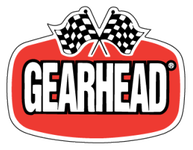




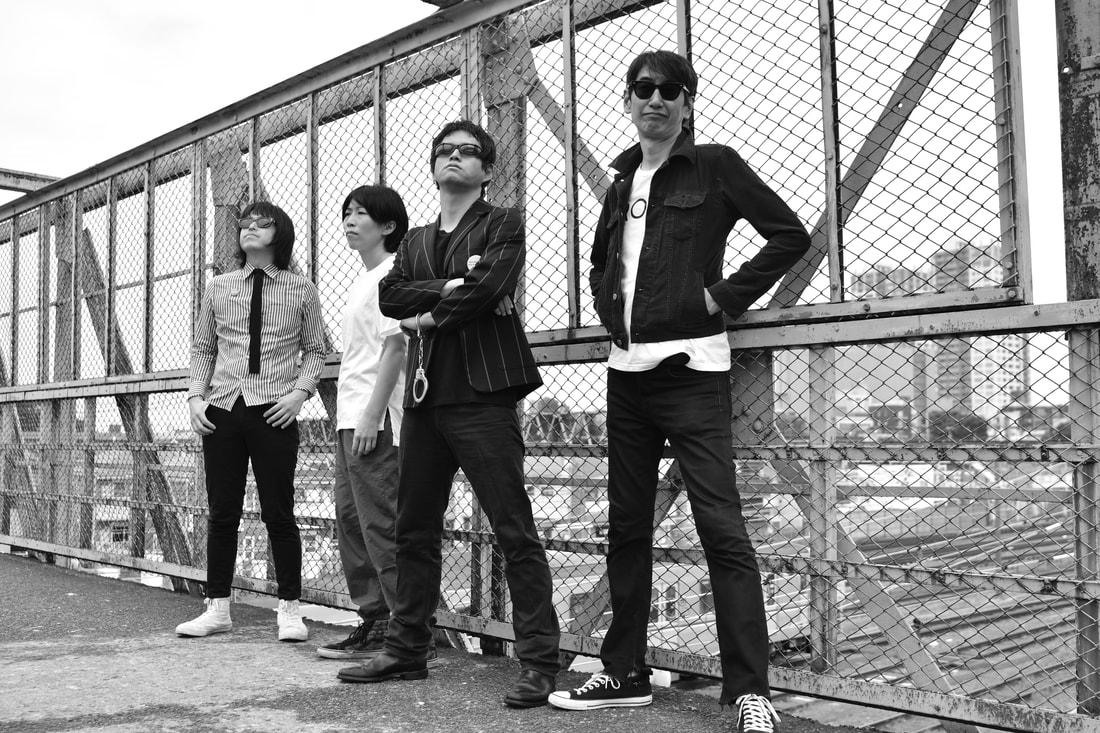

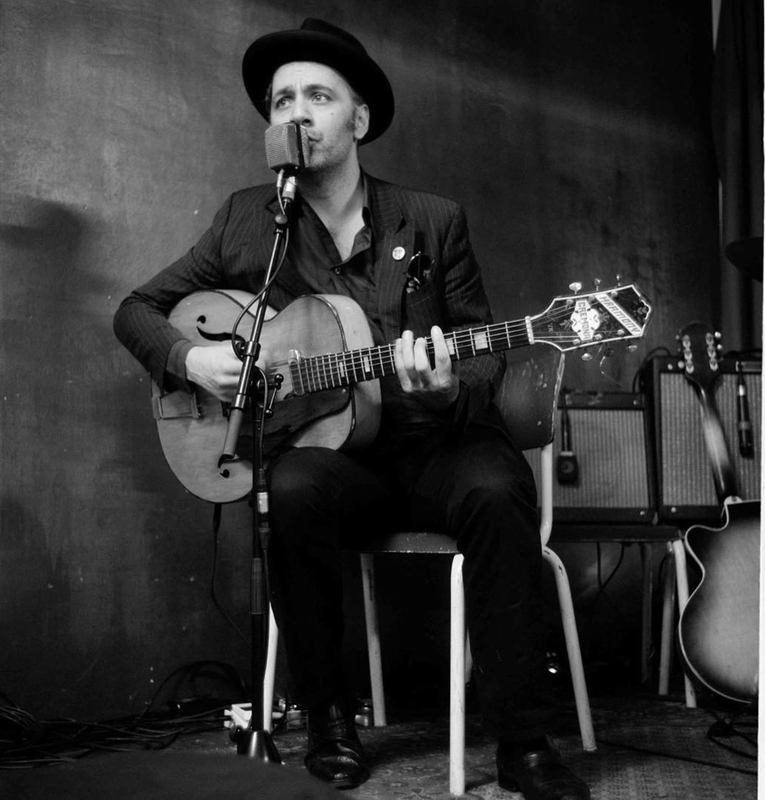
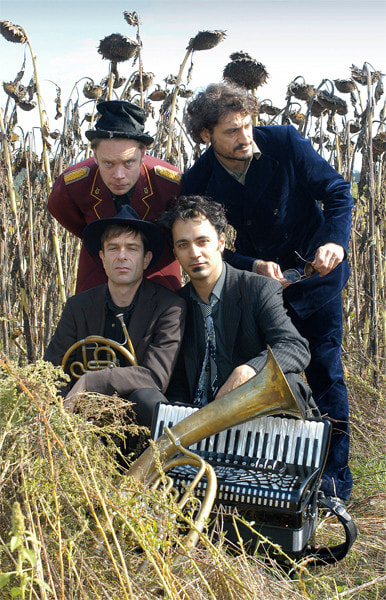
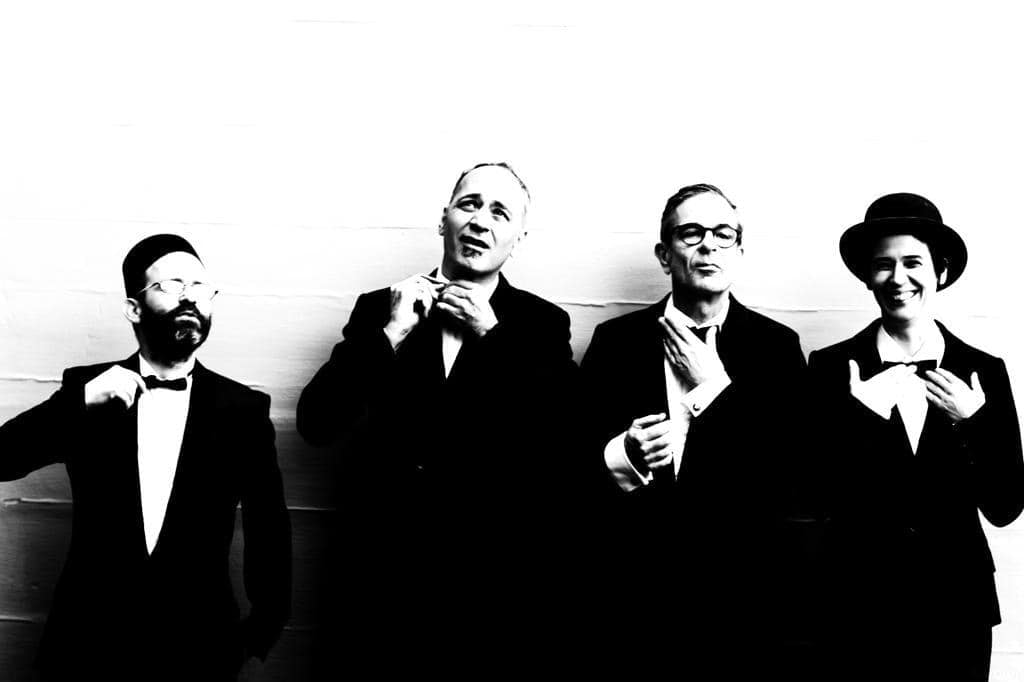
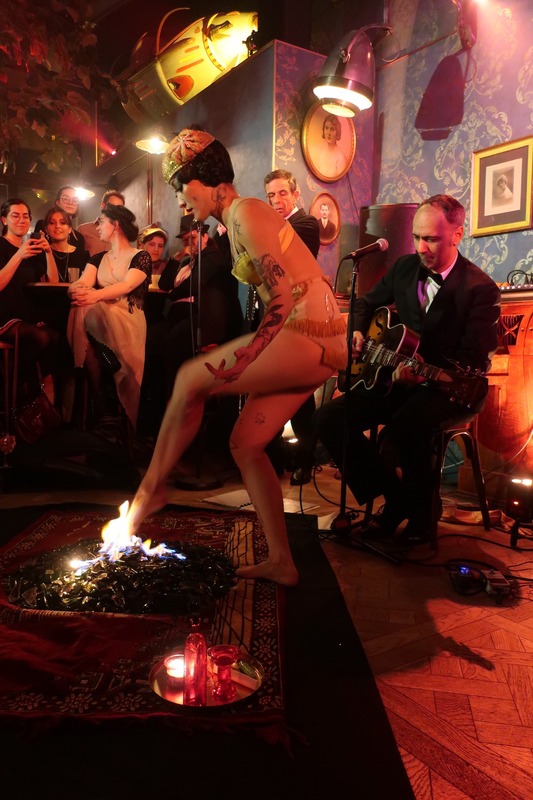
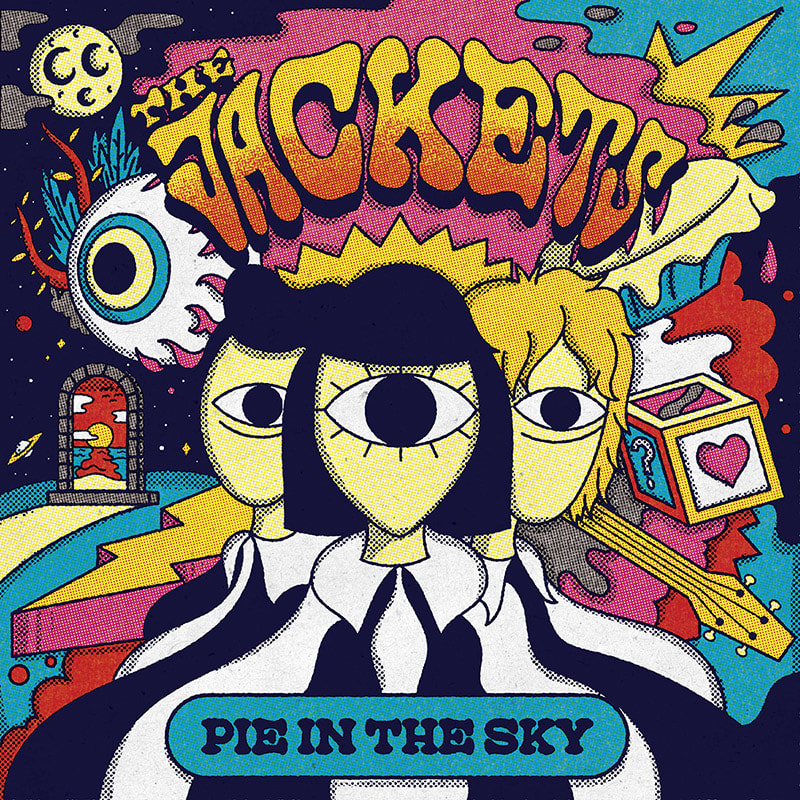
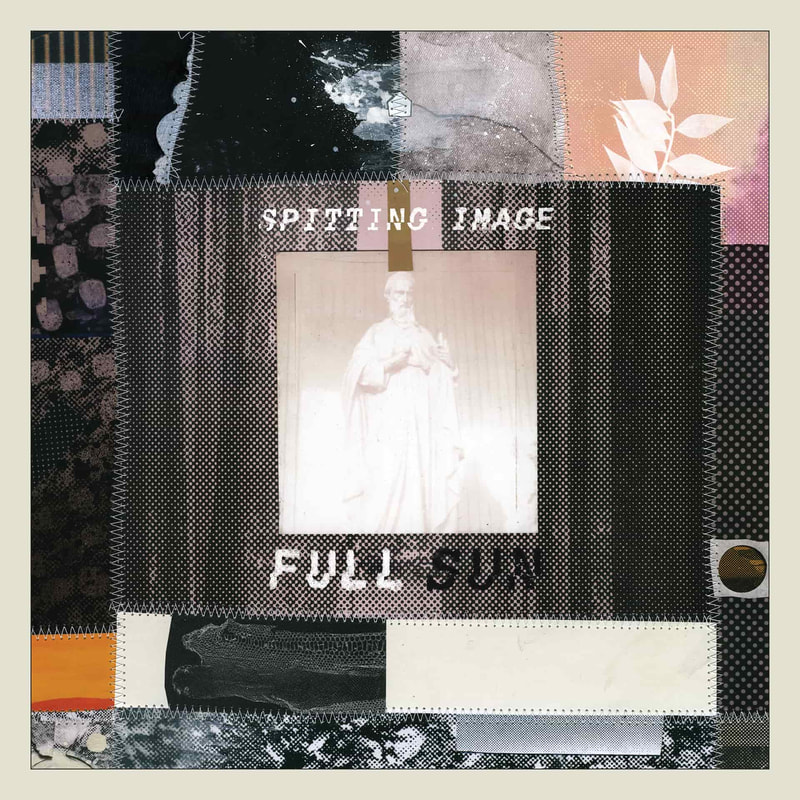
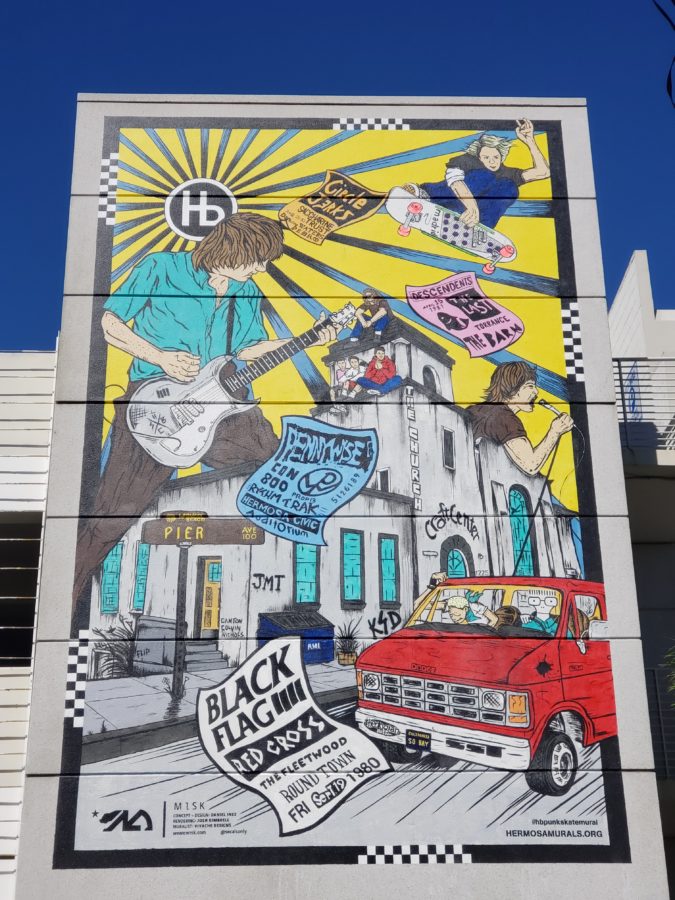
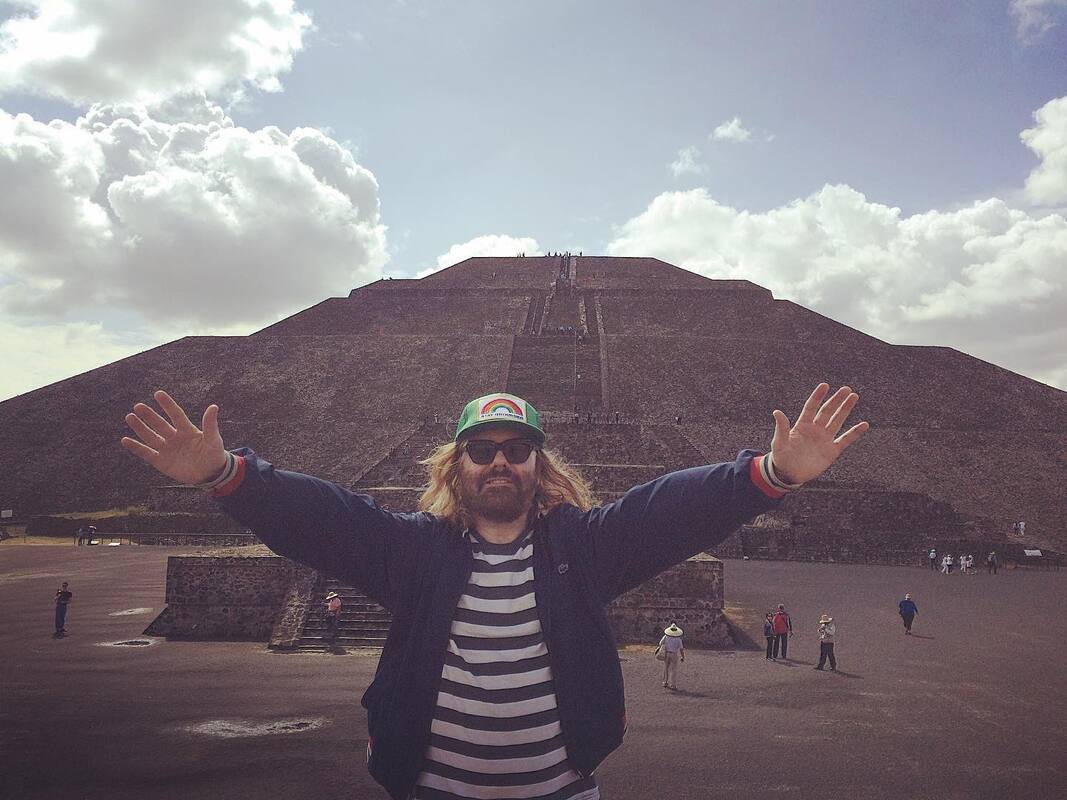
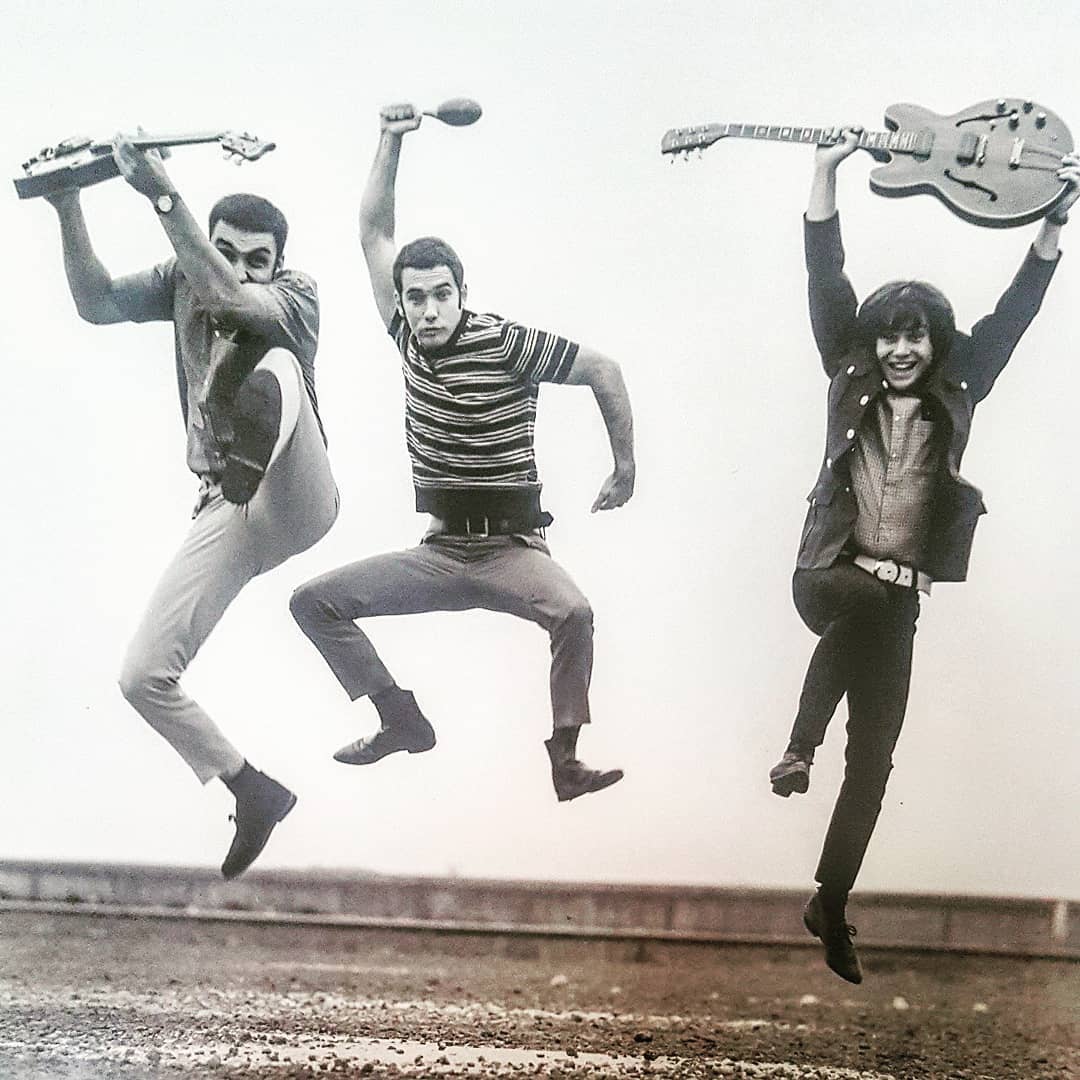

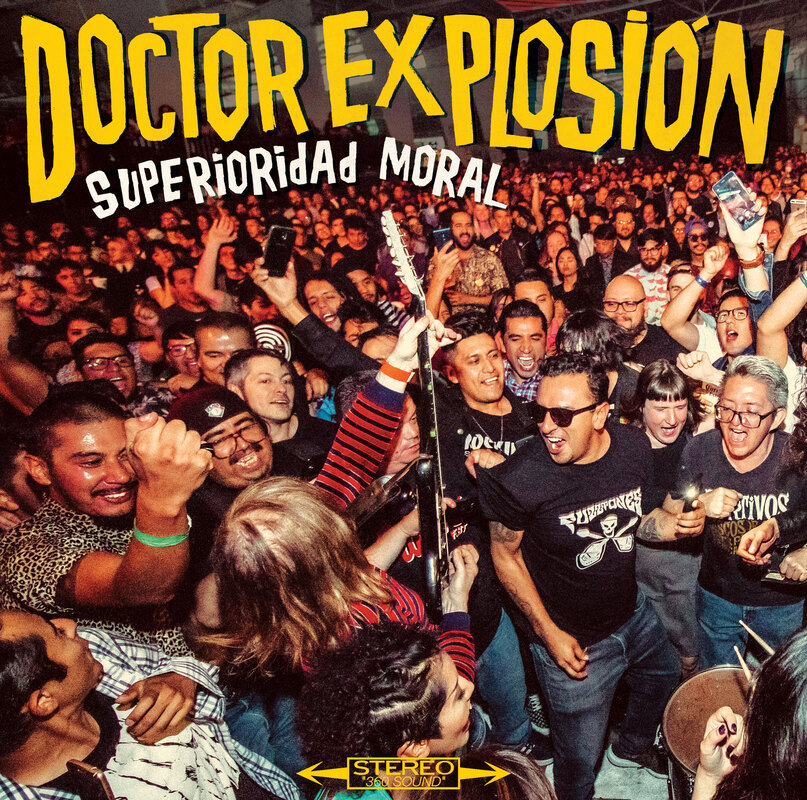
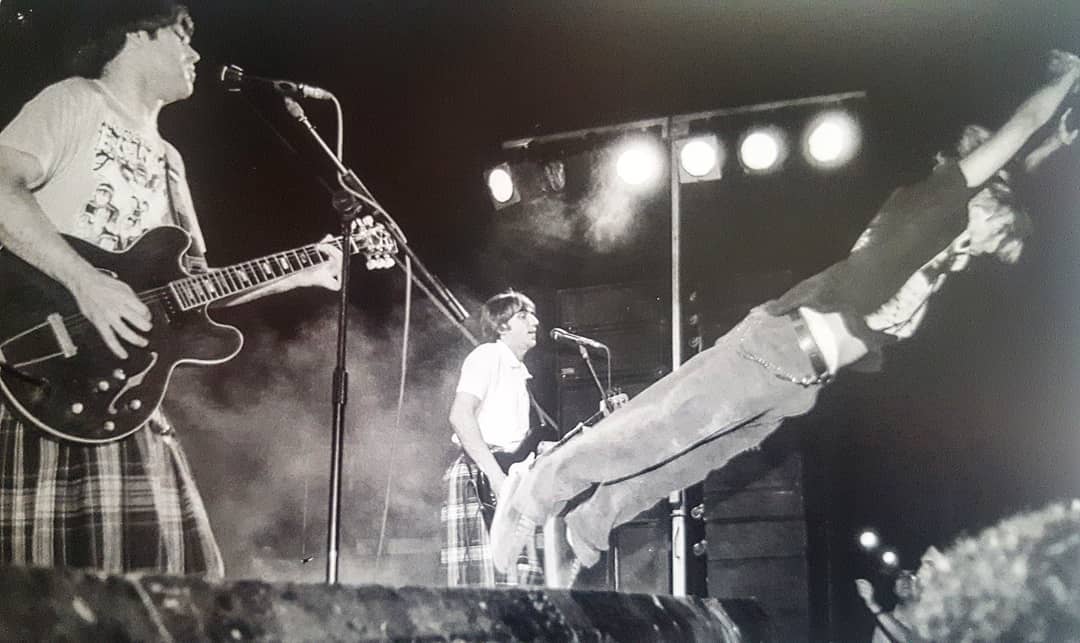
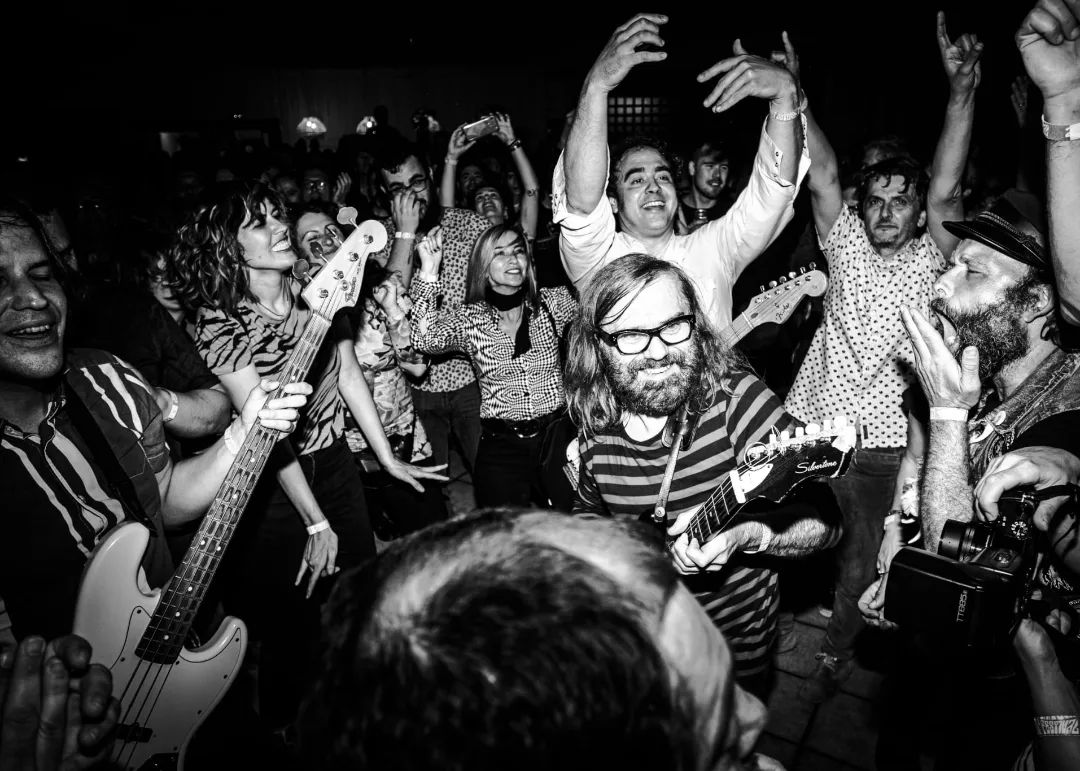
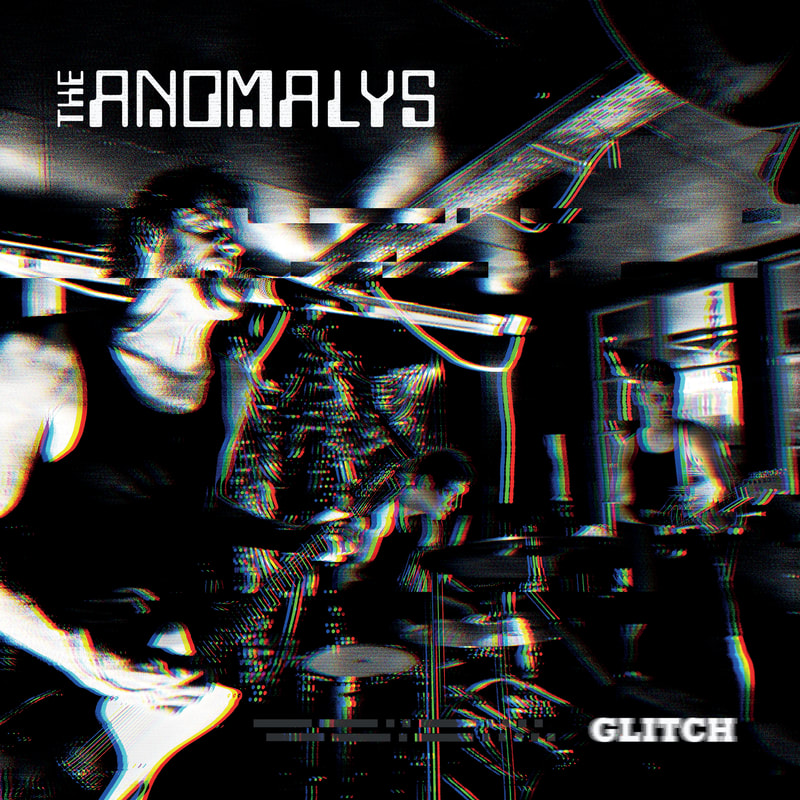
 RSS Feed
RSS Feed